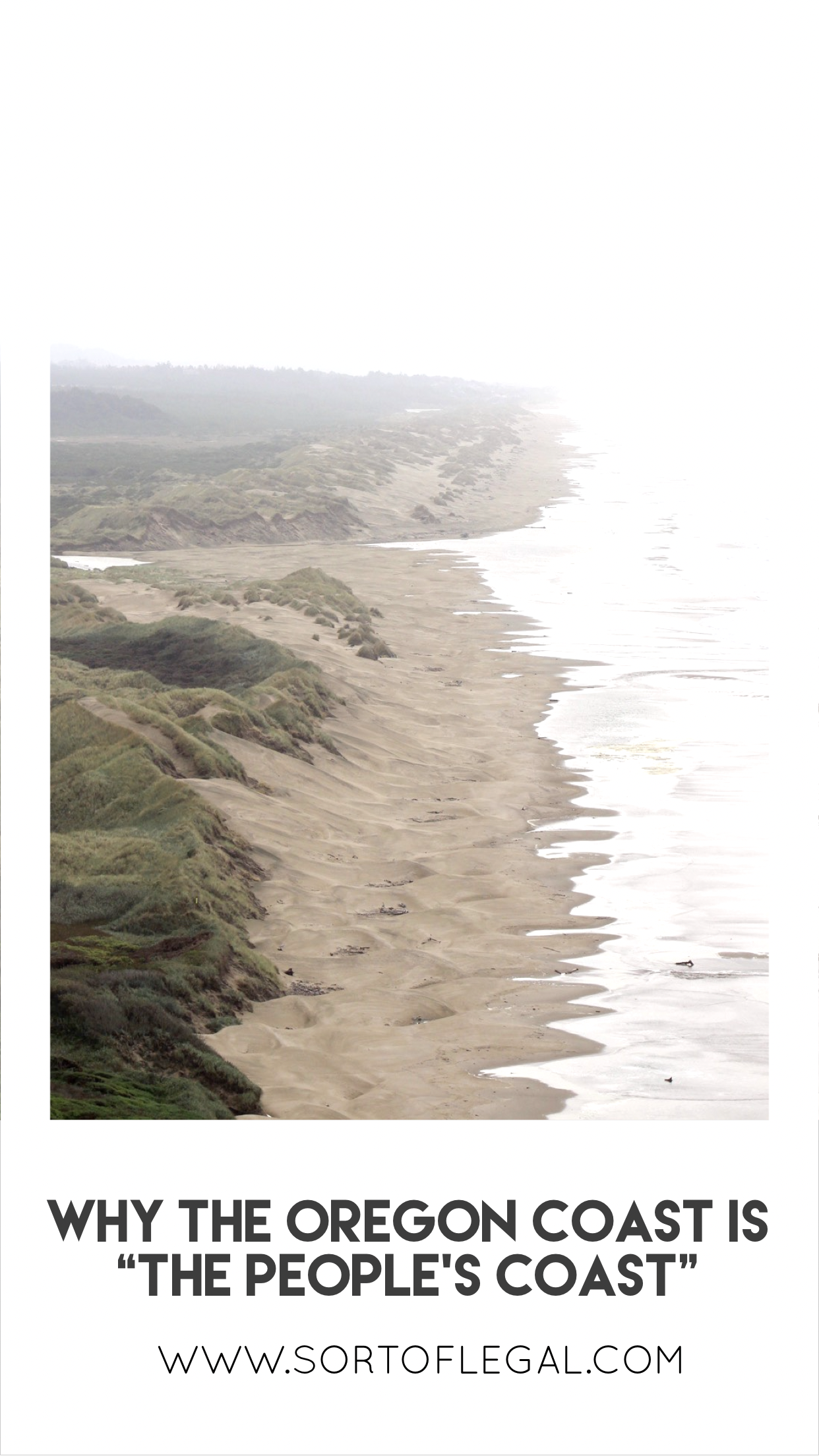
Why the Oregon Coast is Called “The People’s Coast.”
As I neared Oregon on my long-term road trip/van life adventure this summer, I began looking up campgrounds to stay at and things to see along the coast, because that’s my travel style – plan the big things, figure out most of it as I go. I kept seeing Oregon’s Coast referred to as “The People’s Coast.
I was curious so I researched (ok, Google researched) why Oregon’s coast is referred to as “The People’s Coast.” Turns out, it’s more than just a catchy marketing slogan. The People’s Coast is an allusion to the aptly-named, “Oregon Beach Bill,” which passed and signed into law in Oregon in 1967. The Bill was a landmark piece of legislation that expanded protection of public access to Oregon’s beaches for future generations. (And it’s a shoreline worth protecting – check out some photos of it here)
History of the Oregon Beach Bill in Brief
Even before Oregon Beach Bill, Oregonians were proud of the free beach access the state provided its citizens. They believed they held this right of access under a 1913 bill deemed the state’s public beaches public highways. Unfortunately, the protection of the beaches was not as wide-sweeping as they believed.
It turned out that the 1913 legislation only maintained the wet-sand areas of the shoreline as public. The dry-sand areas were not protected; in fact, 112 miles of the beach were privately owned, and around the 1960s, those owners, most notably the Surfsand Motel in Cannon Beach, began to develop and assert exclusive rights to those areas.
In 1967, the Oregon legislature passed a piece of legislation, which gave Oregonians the full-free access to the beach they thought they had all along. That piece of legislation became known as the Oregon Beach Bill. Then Oregon Governor Tom McCall, who had been an outspoken supporter of the Bill, signed it into law.
How the Oregon Beach Bill Expanded Access to Dry Sand Areas
One of the interesting aspects of the bill was how it expanded free-public access to Oregon’s beaches to dry sand areas. Remember, there were over 100-miles of privately owned beaches at the time. Also, remember that for decades, Oregonians had believed they had public access to these areas and used them as if they were publicly owned.
The legislature, in the Beach Bill, declared that the public’s multi-decade, continued use, created an easement in favor of the public. In other words, the public had the right to use these lands even if the public did not technically own them. A crafty move that withstood legal challenges by private land owners.
To this day, Oregon uses this two-pronged approach to protect its beaches. Under Oregon Statute §390.615 “the shore of the Pacific Ocean between ordinary high tide and extreme low tide,” is a state recreation area owned by the State of Oregon. Under Oregon Statute §390.610, all the areas between extreme low tide and the vegetation line, that the public has acquired an easement in are required to be held by the State and administered as state recreation areas.
Eeeek, too much legalease?? Here’s the bottom line: There’s some nuance, but generally, Oregon’s coast is protected for free public access from the lowest point of low tide to the vegetation line. And thus, the Oregon coast continues to be The People’s Coast.
Additional Information About the History of The People’s Coast
The Oregon Encyclopedia: Oregon Beach Bill
Oregon Public Broadcasting: The Beach Bill (Video)
Portland Monthly: This Sand Is Our Sand: Why Oregon’s Beaches Belong to Everyone
Statesman Journal: Oregon Celebrates 50 Years of Beach Bill
Outdoor Project: The People’s Coast
Full Text Original Beach Bill (for my fellow attorneys)
Oregon Statutes 390.60, et. seq. (also for my fellow attorneys)
